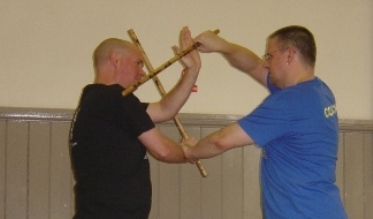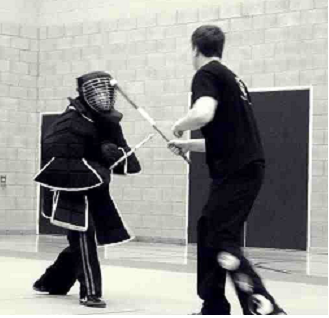Filipino martial arts are hundred if not thousands of years old and are as rich in history and diveristy as other martial arts styles. They did not become organised beyond their village styles until the 1920s when organisations such as Doce Pares started. From then onwards more and more groups have been publicised with their own blend of fighting styles.
Most Filipino styles focus on training weapons first rather than empty hands. Weapons are the most likely combat tool and thus it was and still is vitally important in the Philipines. The plus side of this is that your physical skills improve much quicker with weapons and the defensive aspect is essential for modern self defence scenarios.
You will learn empty hands, footwork, power generation, single stick, double stick and knife as the core system but we will expand into grappling and more advanced weapons such as stick and dagger when the student is ready.
Doce Pares Eskrima

Doce Pares Eskirma was officailly organised and founded in 1932 in Cebu. From then onwards the Canete family have been leading teachers and fighters for this group and the system is taught world wide with a common syllabus and unique elements depending on who your instructor is. Doce Pares Style is known for it’s close quarter fighting, stick and dagger techniques and Locks and throws (Eskrido).
Several leading groups exist such as Guba Doce Pares, Cacoy Cantete Doce Pares, Original Doce Pares, San Migel Doce Pares etc. All groups have similar material with unique aspects added by their teachers.
Panantukan & Kali

Filipino martial arts provides a complete system from empty hand to weapons. It covers all ranges and types of attacks and develops physical attributes to a high level.
Panantukan is one of many terms used to describe the emtpy hand methods of FMA. Generally FMA concerns itsself with self defence, street fighting or what is commonly known as dirty boxing. These skills are either taught via a kickboxing format or through self defence techniques and all moves can be linked back to the weaponary skills.
Kali is often used a s a term to describe Filipino Martial Arts in the western world. Bruce Lee Student and Filipino martial artist Dan Inosanto is largely responsible for popularising both the techniques & history of all FMA to the wider world.
Open Class Times
Under timetable you can find open class times by style and by weekday